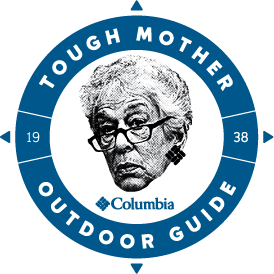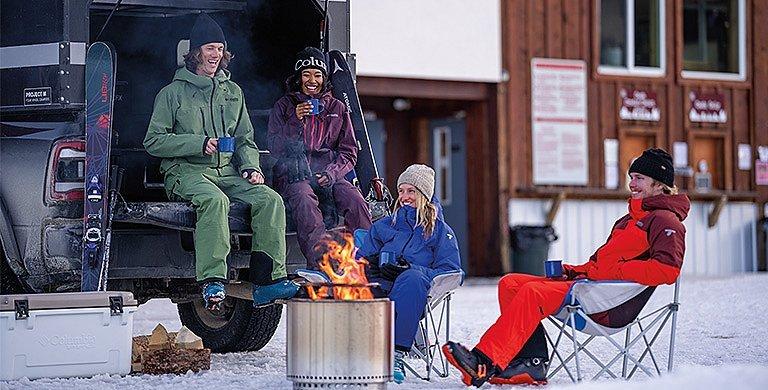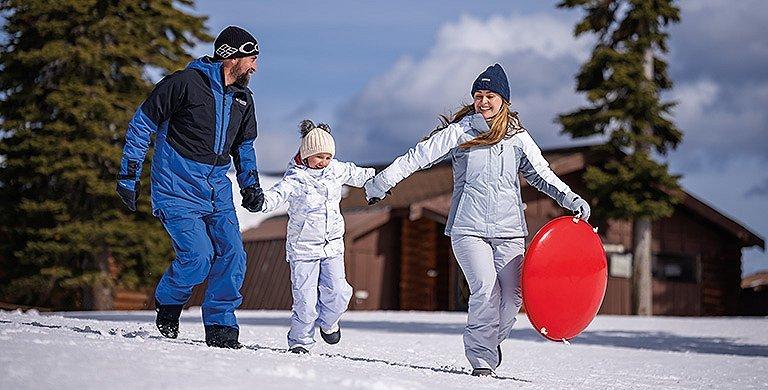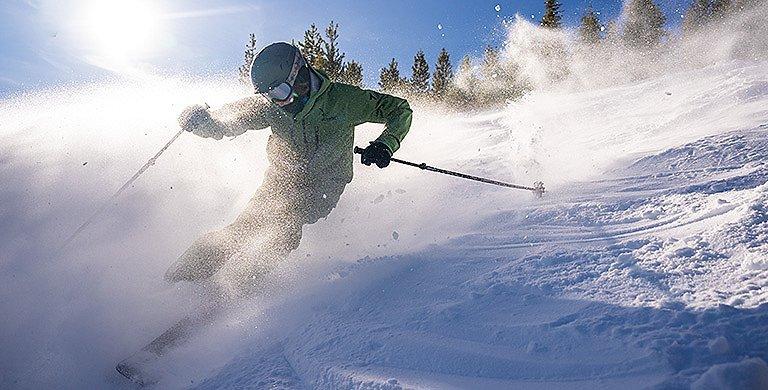SKI & SNOW
How to Get Started Backcountry Skiing and Snowboarding
Everything you need to know about getting involved with backcountry skiing and snowboarding
BY: NANCY BOUCHARD
Backcountry skiing is an exciting alternative to groomed runs and chair lifts. It allows you to ditch the crowds and head into uncharted territory, where the powder is often untracked and the scenery breathtaking. Whether you’re bootpacking up a ridgeline or skinning through a snowy forest, backcountry skiing is all about adventure, independence, and solitude.
While backcountry skiing encompasses various styles, it primarily focuses on the skills needed for both uphill and downhill travel. Techniques such as telemark skiing, alpine touring, and splitboarding require you to ascend to the top of a hill before descending pristine, ungroomed snowfields or glades.
There are countless ski areas in the U.S. and Canada, but if you’re looking to amp up your adventure, there’s a wealth of open space available for skiers and snowboarders eager to explore on their own. With millions of skiable acres across both countries, including vast national forests and parks, you'll discover plenty of untouched snow just waiting for you. In the U.S., the Forest Service manages around 193 million acres, while Canada offers over 100 million acres of public land to explore. Just remember, when you venture off-piste, you’re responsible for your own safety, so thorough preparation is essential.
“The mountains can be a very dangerous place, and things can turn bad very quickly,” explains Columbia ambassador and pro snowboarder, Curtis Ciszek. “But with good decision making, the right tools, and proper skill set, you can manage this risk.” To get that proper skill set, Cizek suggests taking a Level 1 Avalanche Safety course—ideally with the group of people you plan on going into the mountains with. Cizek’s other advice? “Layering is everything when you are skiing or snowboarding in the backcountry,” he explains. “Since you are away from a resort, you need to more closely manage staying warm and dry. He depends on Columbia’s 3-layer waterproof, breathable shell jacket and pants over a mid-layer and base-layer. “That way when you are warm, you can shed a layer, and when you are cold, add one.”
While backcountry skiing encompasses various styles, it primarily focuses on the skills needed for both uphill and downhill travel. Techniques such as telemark skiing, alpine touring, and splitboarding require you to ascend to the top of a hill before descending pristine, ungroomed snowfields or glades.
There are countless ski areas in the U.S. and Canada, but if you’re looking to amp up your adventure, there’s a wealth of open space available for skiers and snowboarders eager to explore on their own. With millions of skiable acres across both countries, including vast national forests and parks, you'll discover plenty of untouched snow just waiting for you. In the U.S., the Forest Service manages around 193 million acres, while Canada offers over 100 million acres of public land to explore. Just remember, when you venture off-piste, you’re responsible for your own safety, so thorough preparation is essential.
“The mountains can be a very dangerous place, and things can turn bad very quickly,” explains Columbia ambassador and pro snowboarder, Curtis Ciszek. “But with good decision making, the right tools, and proper skill set, you can manage this risk.” To get that proper skill set, Cizek suggests taking a Level 1 Avalanche Safety course—ideally with the group of people you plan on going into the mountains with. Cizek’s other advice? “Layering is everything when you are skiing or snowboarding in the backcountry,” he explains. “Since you are away from a resort, you need to more closely manage staying warm and dry. He depends on Columbia’s 3-layer waterproof, breathable shell jacket and pants over a mid-layer and base-layer. “That way when you are warm, you can shed a layer, and when you are cold, add one.”
Planning is Everything
Start Slow
Choose a trail you are familiar with. Keep in mind that as you head out into the snow, there may not be tracks to follow. If it is snowing or windy while you are skiing, the tracks you make may disappear before you can retrace them. While learning to navigate in the backcountry, pick destinations where route-finding won’t be a challenge.
Make a Plan and Share It with Others
Before you head out, always have a solid plan about where you are going and when you’ll return. Share this plan with an ICE (In Case of Emergency) contact, detailing where you’ll park, your ski route, and your expected return time. If there’s a problem and you go MIA, someone will know where to start looking.
Pay Close Attention to the Weather Forecast
Even individuals experienced with maps, compasses, and altimeters can get lost in a blizzard. If a lot of snow is expected, wait for a clear day. If there’s been abundant snowfall, wait until the avalanche danger has dropped.
Pay Even Closer Attention to the Avalanche Report
Do an internet search for the avalanche forecasting service in your area. The avalanche danger scale ranges from 1 to 5 in the U.S. and Canada, with 1 being low risk and 5 being high. If the danger is high—3 or above—postpone your trip for another day. Generally, slopes less than 25 degrees are considered less likely to slide than steeper slopes. However, a slide can start high up in a couloir you can’t see. It’s a good idea to take an avalanche safety course if you are skiing in an area with avalanche danger. Check with your local ski shop or outdoor club; the American Avalanche Association also has a list of courses offered for recreational skiers and snowboarders as well as professionals.
Check Your Gear
Light is right when it comes to backcountry skiing and snowboarding, but durability is important as well. If you are miles from the nearest road, you can’t afford equipment failure. Always inspect your gear before heading out into the backcountry on your skis or splitboard. Check your bindings, ensure you have both skins, and verify that your skis and poles are in good working order.
Pack Wisely
Bring sufficient layers, food, and water so that if something goes wrong, you can survive until help arrives. This includes a waterproof shell jacket and pants, base layers, and extra mid-layers. Invest in a lightweight, packable puffy down or synthetic jacket that you can put on during rest stops. Your survival kit should include essential first aid supplies, a headlamp, granola bars, and a space blanket.
Get to Know Your Snow Safety Gear
Even experienced backcountry skiers practice with their avalanche beacon, shovel, and probe. Ensure your beacon has fresh batteries; you can strap it to your chest or put it in a secure pocket. If you are skiing with a group, someone needs to perform a beacon check before you head out to ensure that everyone’s equipment is turned on and working. You’ll need a shovel and probe, which should be carried inside your pack. Avalanche airbags are standard equipment in areas with significant avalanche danger. These work with either a gas canister or rechargeable battery. Battery-operated ones are easier to practice with, as you don’t need to refill any canisters, and you can fly with them on an airplane. If you deploy the airbag, make sure you know how to repack it so you can continue skiing.
Practice Your Transitions
Backcountry gear differs from your alpine ski setup. Instead of simply stepping into your bindings, you’ll need to understand how the toe piece works and how the heel can be set up for walking (free heel) and then locked down for actual skiing. Practice the system at home. Additionally, master the art of putting on and taking off your skins. A few practice sessions will make everything smoother when you are out in the wild.
Understanding Backcountry Ski and Snowboarding Equipment
Backcountry skiing has become easier—and arguably safer—due to advances in equipment. Skis are lighter and higher performing than ever before, and new binding technology has made it easier to walk uphill while wearing skis and maintain control while skiing down.
Any ski or snowboard that you might use at a resort can be skied in the backcountry, although snowboarders should invest in a splitboard designed for both uphill and downhill travel. For skiers, a lightweight ski that handles everything from windblown crust to bottomless powder is ideal. Many backcountry skiers prefer a ski that’s at least 95mm underfoot. You’ll need ski boots with a “tech” toe, meaning that there are pin holes on either side of the boot’s toe. These boots will work fine with traditional alpine bindings, but the “pin” system allows your boot to rotate at the toe while you walk. You’ll also have a “walk mode,” which releases the cuff so your foot can flex while you walk. These hybrid boots work for alpine (downhill) bindings as well as backcountry alpine touring (AT) use.
Any ski or snowboard that you might use at a resort can be skied in the backcountry, although snowboarders should invest in a splitboard designed for both uphill and downhill travel. For skiers, a lightweight ski that handles everything from windblown crust to bottomless powder is ideal. Many backcountry skiers prefer a ski that’s at least 95mm underfoot. You’ll need ski boots with a “tech” toe, meaning that there are pin holes on either side of the boot’s toe. These boots will work fine with traditional alpine bindings, but the “pin” system allows your boot to rotate at the toe while you walk. You’ll also have a “walk mode,” which releases the cuff so your foot can flex while you walk. These hybrid boots work for alpine (downhill) bindings as well as backcountry alpine touring (AT) use.
There are various bindings for backcountry skiing. The most important element is to choose a “tech” binding with a “free heel” so you can walk with your skis on. Alpine Touring (AT) bindings provide a free-heel mode for moving efficiently on flat and uphill terrain, along with the option to lock down your heel—and toe—for the descent. The purist form of backcountry skiing is telemark, where your heels are always free. However, the classic telemark turn takes some practice. Splitboards are snowboards that divide into two pieces for walking, with bindings that adapt to both walk and ride modes.
Climbing skins are specialized strips of material that attach to the bottom of skis or splitboards to provide traction for skiing uphill or across flat sections. You need to know the length and width of your skis and get skins that match these dimensions. Many times, you can order skins from the same brand that made your skis. When you reach the top of your ascent, you strip the skins off the ski, fold them carefully with a piece of netting in between so they don’t stick to themselves, and then “transition” your boots and bindings to ski mode. It is a simple process.
Climbing skins are specialized strips of material that attach to the bottom of skis or splitboards to provide traction for skiing uphill or across flat sections. You need to know the length and width of your skis and get skins that match these dimensions. Many times, you can order skins from the same brand that made your skis. When you reach the top of your ascent, you strip the skins off the ski, fold them carefully with a piece of netting in between so they don’t stick to themselves, and then “transition” your boots and bindings to ski mode. It is a simple process.
Skiing Etiquette
While you’re out there, remember some rules of the trail. Practice Leave No Trace principles, keep noise to a minimum, let faster skiers pass, and avoid boot packing in the skin track. When setting an uphill track, opt for a low-angle approach to conserve energy. If you’re skiing with your dog, make sure you know the rules and regulations for your destination and that you have enough food and water for both of you.
Take a Class
Many courses can help you become a better and safer backcountry skier or snowboarder. You can take a one-day introductory program that covers the basics: backcountry ski/splitboard equipment, skinning techniques, and avalanche beacon usage and rescue techniques. These classes are offered by local guiding groups, college outdoor programs, local outdoor outfitters, and organizations like the American Alpine Club,
Colorado Mountain Club,
Appalachian Mountain Club,
Mazamas,
Sierra Club, and other like-minded groups.
Practice at a Local Ski Area
Closed and unplowed forest roads often offer the earliest opportunities for backcountry cross-country skiing. Skiers looking for an early-season downhill run might find it at a ski area that allows uphill travel. Some resorts offer “sidecountry” access, meaning there are exit points where you can leave the in-bounds, patrolled ski slopes and head out on your own
For your next winter adventure, check out Columbia Sportswear’s line of ski and snowboard apparel, winter boots, and accessories.



